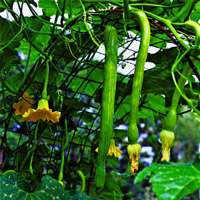Herb Gardening Gardening:
A Comprehensive Guide to Cultivating Your Herbal Haven

Herb gardening is a delightful and rewarding pursuit. It offers a plethora of benefits, from culinary enhancements to medicinal uses.
Whether you are a seasoned gardener or a novice, cultivating herbs can be a fulfilling and enriching experience.
This guide will explore everything you need to know about herb gardening, from selecting the right herbs to planting, maintaining, and harvesting them.
Introduction to Herb Gardening
Herb gardening has been practiced for centuries, providing people with fresh, aromatic herbs for cooking, healing, and even spiritual purposes.
Today, growing your herbs is a fantastic way to ensure you have fresh, organic ingredients at your fingertips while enhancing your garden’s beauty and fragrance.
Benefits of Growing Your Herbs
Growing herbs offers numerous advantages:
- Freshness and Flavor:
Homegrown herbs are fresher and more flavorful than store-bought. - Cost-Effective:
Cultivating your herbs is more economical in the long run. - Organic and Pesticide-Free:
You have complete control over what goes into your garden, ensuring your herbs are organic. - Therapeutic and Educational:
Gardening is a therapeutic activity that allows one to learn about different plant species and their uses.
Choosing the Right Herbs for Your Garden
Selecting the right herbs for your garden depends on your needs and preferences. Here are some popular choices:
Culinary Herbs
- Basil: Perfect for Italian dishes, pesto, and salads.
- Parsley: A versatile herb used in a variety of cuisines.
- Rosemary: Excellent for roasting meats and vegetables.
- Thyme: Adds a fragrant touch to soups, stews, and sauces.
- Mint: Ideal for teas, desserts, and cocktails.
Medicinal Herbs
- Lavender: Known for its calming properties, it is used in aromatherapy.
- Chamomile: Commonly used for making soothing teas.
- Echinacea: Boosts the immune system and helps fight colds.
- Aloe Vera: Useful for treating burns and skin irritations.
Aromatic Herbs
- Lemon Balm: Adds a citrusy scent to your garden and can be used in teas.
- Sage: Known for its strong aroma and culinary uses.
- Oregano: A staple in Mediterranean cooking with a robust fragrance.
Planning Your Herb Garden
Proper planning is essential for a thriving herb garden. Consider the following factors:
Location
Choose a location that receives at least 6-8 hours of sunlight daily. Most herbs thrive in sunny spots, but some, like mint and parsley, can tolerate partial shade.
Soil Preparation
Herbs prefer well-draining soil. Add compost or sand to improve drainage if your garden soil is heavy or clay-like. Raised beds or containers can also be effective solutions.
Garden Layout
Plan your garden layout based on the growth habits of your chosen herbs. Taller herbs like rosemary and sage should be placed at the back, while shorter herbs like basil and thyme can be in the front. This arrangement ensures all plants receive adequate sunlight.
Planting Your Herbs
Starting from Seeds vs. Transplants
You can start your herb garden with seeds or transplants. Seeds are cost-effective and offer a wide variety but require more time and care. Transplants, on the other hand, provide a head start and are easier to establish.
Planting Techniques
- Seeds: Sow seeds according to the instructions on the packet. Keep the soil moist until the seeds germinate.
- Transplants: Dig a hole slightly larger than the root ball, place the plant in the hole, and cover it with soil. Water thoroughly.
Caring for Your Herb Garden
Watering
Herbs prefer slightly dry conditions, but regular watering is crucial, especially during hot weather. Water deeply and allow the soil to dry out between waterings to prevent root rot.
Fertilizing
Most herbs do not require heavy fertilization. To provide necessary nutrients, use a balanced, slow-release fertilizer or compost. Over-fertilizing can reduce the flavor and aroma of the herbs.
Pruning and Harvesting
Regular pruning encourages healthy growth and prevents herbs from becoming leggy. Harvest herbs in the morning when their essential oils are at their peak. Use sharp scissors or pruning shears to avoid damaging the plants.
Common Pests and Diseases
Pests
- Aphids: These tiny insects can be controlled with insecticidal soap or by introducing beneficial insects like ladybugs.
- Spider Mites: Increase humidity around the plants and use a miticide if necessary.
- Whiteflies: Use yellow sticky traps to capture these pests.
Diseases
- Powdery Mildew: Ensure good air circulation and avoid overhead watering to prevent this fungal disease.
- Root Rot: Avoid overwatering and ensure proper soil drainage.
Harvesting and Preserving Herbs
Harvesting Techniques
Harvest herbs regularly to encourage new growth. Cut stems just above a pair of leaves to promote branching.
Preserving Methods
- Drying: Hang herbs in small bundles in a dry, dark place until they are brittle. Store in airtight containers.
- Freezing: Chop herbs and place them in ice cube trays with water or olive oil. Freeze and store in labeled bags.
- Infusing: Infuse herbs in oils or vinegar to create flavorful condiments.
Cultivating Your Slice of Green Paradise with Ultimate Ease
Herb gardening is a delightful and accessible way to enhance your garden while providing fresh, flavorful additions to your kitchen.
Growing herbs can be simple and rewarding, whether you’re a novice or an experienced gardener. In this guide, we will explore a variety of easy-to-grow herbs perfect for beginners and provide tips on cultivating these versatile garden plants.
Choosing Easy-to-Grow Herbs for Beginners
Starting with easy-to-grow herbs ensures a successful and enjoyable gardening experience. Here are some of the best beginner herbs:
Basil
- Usage: Ideal for Italian dishes, pesto, and salads.
- Growing Tips: Basil thrives in warm weather and full sun. Keep the soil moist but not waterlogged.
Parsley
- Usage: Versatile herb used in a variety of cuisines.
- Growing Tips: Parsley prefers partial shade and well-drained soil. Regular watering is essential.
Mint
- Usage: Perfect for teas, desserts, and cocktails.
- Growing Tips: Mint is highly adaptable and grows well in partial shade. It spreads quickly, so consider planting it in containers.
Thyme
- Usage: Adds flavor to soups, stews, and sauces.
- Growing Tips: Thyme enjoys full sun and well-drained soil. It’s drought-tolerant and requires minimal watering.
Rosemary
- Usage: Excellent for roasting meats and vegetables.
- Growing Tips: Rosemary prefers full sun and well-drained soil. It can tolerate dry conditions.
Using Your Herbs
Culinary Uses
Fresh herbs can enhance the flavor of your dishes. Add them to salads, soups, sauces, and marinades. Experiment with different combinations to discover your favorite flavors.
Medicinal Uses
Herbs like chamomile and lavender can make soothing teas, and aloe vera gel can be applied to burns and skin irritations.
Craft and Decorative Uses
Use herbs to create fragrant sachets, potpourri, and wreaths. Their beauty and aroma can enhance your home decor.
Herb gardening is a rewarding and enjoyable endeavor that offers numerous benefits. By choosing the right herbs, planning your garden carefully, and providing proper care, you can create a thriving herb garden that will supply you with fresh, aromatic herbs all year round.
If you want to read more information about how to boost traffic on your Website, The Insider’s Views “https://www.theinsidersviews.com/search/label/SEO”.





